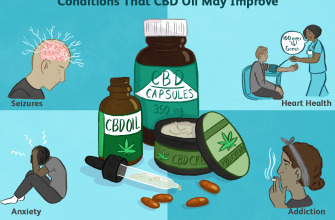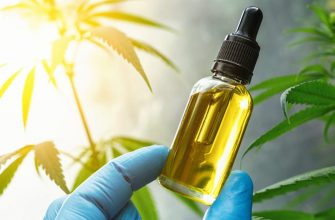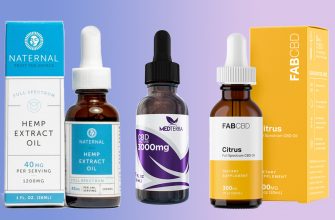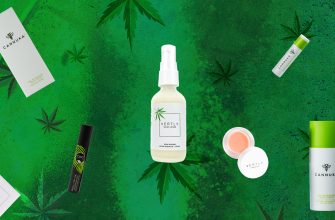In particular, the dispute over the choice of legalization CBD or the whole plant is gaining momentum in several US states. In fact, some companies are already developing smoking devices capable of maximizing the effect of all substances found in the plant. For example, the dynamic convection technology used in the new line of high-tech evaporators from Firefly is designed to efficiently extract all active substances from the product loaded into the device. “The Firefly 2 model independently determines the optimum heating level for cannabis to best vaporize all the terpenes present in it,” says one of the product developers, Rachel Dugas. However, it can be extremely difficult for even high-tech sensors to determine exactly how the insane amount of substances present in plant tissues interact with each other. So what can cannabis medicine experts tell us about the so-called “cannabinoid entourage effect” and its effect on the human body? To this end, we interviewed five independent cannabis experts. They included:
- Jessica Peters (founder of Moxie Meds);
- Constance Finley (Founder and CEO of Constance Therapeutics);
- Mary Lynn Mater (founder and president of Patients Out of Time);
- Eloise Tezein (head of the association of nurses supporting medical legalization);
- Perry Solomon (Chief Medical Officer of the HelloMD project).
Here’s what they told reporters about CBD:
What are the effects CBD has by itself:
Mary Lynn Maitre:” CBD has many properties. In particular, it can be used as an analgesic, antiepileptic, anti-inflammatory and sedative. Besides, CBD protects the brain from the accumulation of substances hazardous to the health of nerve cells in its folds.
Jessica Peters: “I agree with all of the above effects, also adding relief from nausea in cancer patients who have undergone chemotherapy. It is worth noting that not all of these healing effects of the substance appear in the absence of other cannabinoids and terpenes. Some experts claim that they have found effectiveness substance in the fight against psychological addiction to narcotic substances.According to the authors of this discovery, the substance has the ability to direct impulses responsible for addictive behavior from the pleasure center to other sections of the brain.
Constance Finley: “A fairly large collection of verified scientific papers, credits CBD, the property to relieve inflammation, nervousness, any form of pain, as well as relieve muscle spasms and psychotic attacks. Often, in order to have such an effect, the substance must interact with the THC molecule, which, in addition to similar properties, also has a bright, psychoactive effect, although both substances act on completely different receptors.
Perry Solomon: “Separately, a molecule CBD can only have a calming effect on the psyche. Other effects of the substance occur when it is combined with other cannabinoids on CB2 and Mu/Delta opioid receptors. Like THC, the molecule has a tonic and relaxing effect, in turn, without having bright psychoactive side effects when consumed. Also, CBD is now being studied as a treatment for Alzheimer’s disease, capable of destroying brain-damaging beta-amyloid protein compounds.
What is the joint effect of CBD with other substances in the composition of the plant:
Peters: “All cannabinoids have the strongest effect when taken together. In the case of CBD, its effect is largely dependent on the amount of THC consumed together and its ratio to CBD. Thus, an even mixture of THC and CBD extracts is a more effective pain reliever than both substances individually or in unequal proportions. Every month, we better understand the mechanism of the complex interaction of these compounds.”
Eloise Tezein: “From my experience, CBD and THC complement each other’s healing effects while eliminating the negative side effects of the compounds.”
Solomon: “THC tends to optimize the effect of CBD when consumed together. As Ethan Russo’s work shows, terpenes contained in hemp serve as a natural modulator of THC, reducing its psychoactive effects for therapeutic users. In particular, the effect of hemp synergy found by Rousseau can be observed in the treatment of pain, infections of the fungus and bacteria, inflammation of the soft tissues, depression, nervousness, epilepsy and cancer.Terpenes, which are a kind of chemical signal receivers and transmitters, decompose when ingested into acids and lipids, interfering with the restoration of serotonin levels in the brain in the brain. They accelerate the action of neuropeniphrine, dopamine release activity and slow down the absorption of glutamate by the body, contributing to an overall increase in the effect of a single dose of cannabis.”
Mater: “On its own, CBD certainly has a tangible therapeutic effect, but when consumed together with THC, it becomes more noticeable and stronger. I advise using carefully calibrated doses of extracts in medicine, with a certain concentration of both substances.”
How much stronger is the sum of all cannabinoids than the effect of pure CBD?
Peters: “Hemp itself has a very different effect from CBD extract, surpassing the strength of a single substance at times.”
Solomon: “Naturally, the sum of all the components of a plant outweighs the effect of just one part of it.”
Tezein: “If you use marijuana for medical purposes, then only in the form of bumps, or holistic, natural extracts.”
Mater: “The use of CBD mixed with other cannabinoids is absolutely safe. At the same time, such a measure of consumption develops tolerance to active compounds more slowly.
Finley: “Almost in any case, natural cannabis buds will have a much greater effect than an extract containing CBD.”
What can you say about people deliberately keeping CBD, THC, and other cannabis actives on the drug list?
Finley: “I think the decision to use cannabis in medicine should be made by medical experts, not bureaucrats. The new medical strains have a wealth of terpenes and CBD not found in simple wild and farmed strains.”
Matre: “It is imperative that users and their physicians have full access to the full spectrum of medical cannainoids, while also being free to experiment with acceptable dosages.”
Peters: “It is clear that there are still a lot of bureaucratic barriers in the way of cannabis medicine. In my opinion, the authorities should put pressure on the bureaucrats, forcing them to stop such criminal behavior.”
Which method of consumption best reveals the effect of cannabinoid entourage? Finley: “Actually, different methods are better suited to certain categories of consumers. The most universally effective method is by far the vaporization or smoking of cannabis, for a quick effect, or the use of oils extracted from it. In particular, edible oils are better and faster absorbed when they are cannabis suppositories and extracts for external rubbing (for diseases of the digestive tract and diseases of the skin / joints, respectively) can also be effective to a certain extent. ”
Peters: “I advise the consumption of extracts by means of vaporizers. Alcohol-based tinctures of oils, which can be used both externally and internally, are also quite effective.”
Tezein: “In my opinion, the most convenient and effective method of consumption, which does not destroy the active molecules in the tissues of the plant or its extract, is an electronic vaporizer. There is a wide range of such devices on the market today, specifically designed for therapeutic use. They are specifically designed to dynamically modulate the temperature of the heating element by volatilizing the various hemp compounds in turn, rather than simply burning them.”
Source: leafly.com





